The middle of the week is here and that means it’s time for… Wheel Gun Wednesday! This series of posts is devoted to exploring the deeper issues of using a revolver for self-defense – both the good and the bad. Today I’m continuing the “Quest for the Ideal Carry Revolver” that I started last month. Get caught up on part 1 and part 2 if you missed them!
Heavy Metal
Last week, I shared my initial impressions of the Smith & Wesson model 386 — the first gun on my short list of revolvers to try out as a potential temporary replacement for the M&P9c 9mm that I normally carry every day. I like the 7-shot capacity of the 386, and the fact that its lightweight alloy frame gives it a weight very close to the M&P, but the action could use some work, and I’ve had a tough time finding a good holster.
The 386 represents some of the most advanced technology that has ever been applied to the modern fighting revolver, but now we’re going to change pace a bit. The next candidates on the list are a pair of all-steel Smith & Wesson K-frames; the Model 66 and Model 64. For those not up on the Smith & Wesson lingo, K-frame revolvers are the medium size in the S&W lineup, between the small J-frames and the medium-large L-frame. The Model 386 from last week is built on the L-frame, so the 64 and 66 are slightly smaller overall, but they’re heavier due to their being made from steel rather than an aluminum-scandium alloy.
Three Inch Perfection
The S&W K-frame .38s were the most popular police sidearms in the 20th century, especially the ubiquitous 4-inch barreled Model 10. With a production history starting in 1899 and continuing today, it’s one of the most enduring firearm designs of all time. Starting in the early 1970s, S&W began making K-frames that would accommodate the .357 magnum cartridge, but also continued production of the .38 special only versions. Variants in both calibers are available with fixed or adjustable sights and blued or stainless finishes.

K-frame revolvers are most commonly found with 4-inch barrels, but the snub nose 2 and 2.5-inch barrels are also fairly common. In between are the 3-inch barrels, which are not nearly as common, but are arguably the most coveted today. Smith & Wesson currently produces only 4-inch K-frames, so any of the shorter barrels will have to be found used. The 2 and 2.5 inch models are not too hard to come by at affordable prices, but the 3-inch versions of the same models often go for hundreds of dollars more. Collectors appreciate their scarcity, but shooters just want them because they’re awesome.
The key to understanding the appeal of the 3-inch K-frame is “balance”. They’re the Glock 19 of revolvers (or rather, the Glock 19 is the 3-inch K-frame of semi-autos); the ideal balance of shootability and concealability. Three inches may be only an inch shorter than a full “service size” revolver, but it makes a revolver far easier to conceal for most, and still provides a decent sight radius.
The 3-inchers also provide a nice balance the more literal sense of their weight distribution. This is a somewhat subjective quality, but it’s far from arbitrary — balance can make a very real difference in how a shooter will perform with a given firearm. Among other things, balance can have an effect on draw speed, felt recoil, recoil recovery, and target transitions.
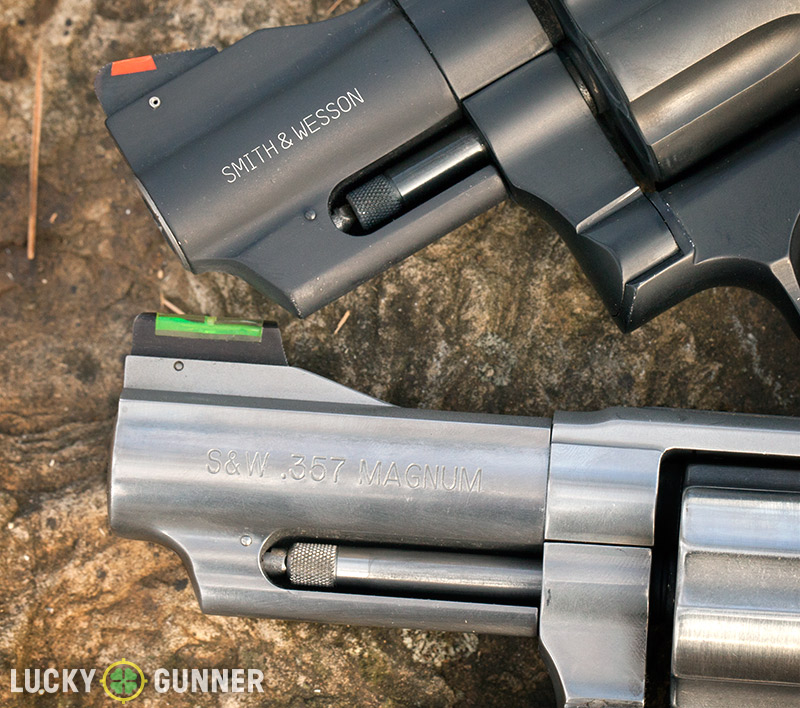
A similar balance can be found in the 2.5-inch models, but those lack a key feature found with a 3-inch barrel: a full-length ejector rod. The long .38 and .357 cartridge cases have a tendency to get stuck in their chambers during a reload. The extra length of the ejector rod on the 3-inch and longer barreled models goes a long way in preventing this problem.
Models 64 and 66 Compared
The two K-frames I’m working with are very similar on the surface. They’re both 6-shot stainless 3-inch K-frames, and they can share grips, holsters, and most of the same internal parts. So why bother with two of the same thing? There are some key differences, and I thought it would be worthwhile to explore the advantages of each.
The Model 64 is chambered in .38 special and has fixed sights. This particular sample is a model 64-3, made sometime in the early 1980s and used by the California Correctional Youth Authority (as evidenced by the letters “CYA” stamped on the side of the frame). The finish must have been rough on this surplus gun because its previous owner had it bead blasted to a nice matte grey. I picked it up for $515, including a set of VZ composite grips. I swapped the VZ grips over to the Model 66 and replaced them with a set of Hideaway Grips by Precision Gun Specialities.
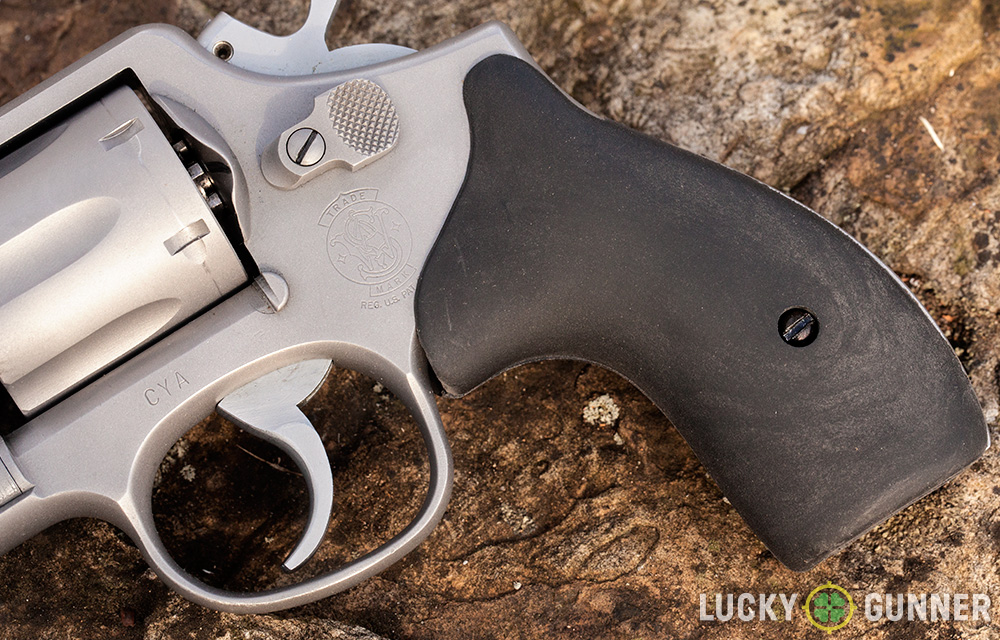
The Model 66 fires .357 magnum as well as .38 special, and is outfitted with adjustable sights and an ejector shroud beneath the barrel. It’s also two ounces heavier and about 3/16″ longer than the 64. This 66-6 is from the early 2000s and was the first variant of the model 66 series to include the internal lock. The 3-inch version of the 66 is in particularly high demand and even this late production model was $750 used. I would love to have sprung for a pre-lock model, but those are going for about $200 more.
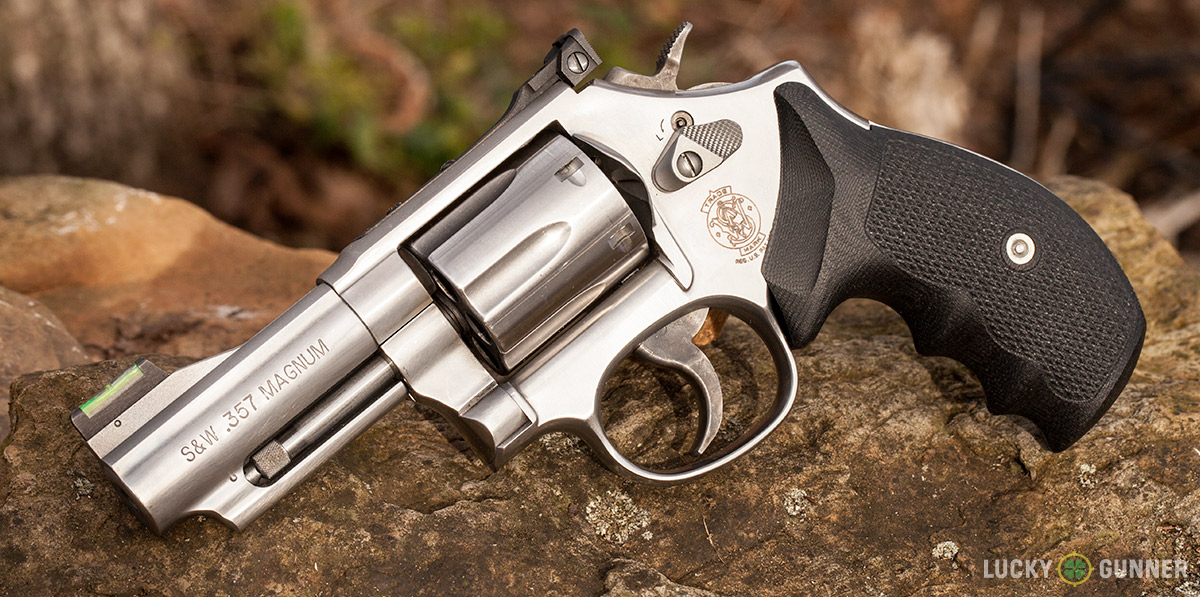
So now I’ve got a pair of similar revolvers, but one will handle magnums and can be fitted with a wide array of aftermarket sights while the other shoots .38 special only and I’m stuck with the shallow fixed sights that are machined into the top strap.
Semi-Auto Comparison
Based on the features I believe are important on my semi-auto carry gun, I outlined some pretty specific criteria for the carry revolvers I was going to be looking into for this project. Let’s see how these two K-frames measure up:
- Size & Capacity: 2-3″ barrel with 6 or 7 shot cylinder. Check.
- Weight: Roughly 20-30 ounces. Without grips, the Model 66 weighs 31.5 ounces and the 64 is 29.5 ounces. Grips can add anywhere from 2-5 ounces. That puts both slightly over my ideal limit, but not by a significant margin. The extra weight does mean that holster selection will be even more critical.
- Caliber: .38 Special or .357 magnum. Check.
- Action: Smooth double action and bobbed hammer. The action on both of these guns is excellent with smooth trigger pulls breaking right at 10 pounds. The bobbed hammer is an easy mod for a gunsmith.
-
S&W 66 with green fiber optic front sight and Bowen Rough Country adjustable rear sight. Sights: Large, high visibility sights. The Model 66 clearly meets this one. The bright green fiber optic front sight is excellent on the range, even in somewhat dim lighting. The rear sight that came with this 66 is the typical S&W adjustable style but with a v-shaped rear sight blade. After one range session with this abomination I decided the v-notch provided the absolute worst sight picture I’ve ever had to use. So I replaced it with a Bowen Rough Country adjustable rear sight I already had on hand. Big improvement. The Model 64 has the sad little trench style rear sights that I specifically wanted to avoid for this project. But since so many revolvers have these kind of sights, I thought it would only be fair if I at least tried a fixed sight gun and compared my performance to a similar gun with better sights.
- Aftermarket Support: Wide availability of holsters, accessories, and replacement parts. S&W has made over 6 million model 10s alone. The K-frame aftermarket is alive and well. However, appendix IWB holsters are still not exactly plentiful for K-frames. Right now I’m using an Archangel from Dale Fricke Holsters, and it’s working out well so far.
First Impressions
We’re still pretty early into this experiment, but if I had to call it today and declare a winner of the “quest for the ideal carry revolver”, I could flip a coin and be totally content picking either the model 64 or 66. On paper, I like just about everything better about the 386. It’s got capacity and weight on its side, and it’s not a bad shooter for such a lightweight. The steel K-frames are heavier than the 386 and the M&P, and by enough of a margin that my back can tell a difference by 7PM. But there’s that “balance” thing I was talking about earlier. The 66 and 64 are also slimmer and more compact than the 386, and that extra 10 ounces has a dramatic positive impact when handling and shooting these guns. Or if I was a pop star, I might say they’ve “got all the right junk in all the right places.”
It also doesn’t hurt that both of these guns have superb triggers (by factory trigger standards, anyway). If I’m able to smooth out the action on the 386, it might start to come into its own. As it stands so far, I’ve been able to shoot much quicker and more accurately with the K-frames, partly due to their superior triggers.
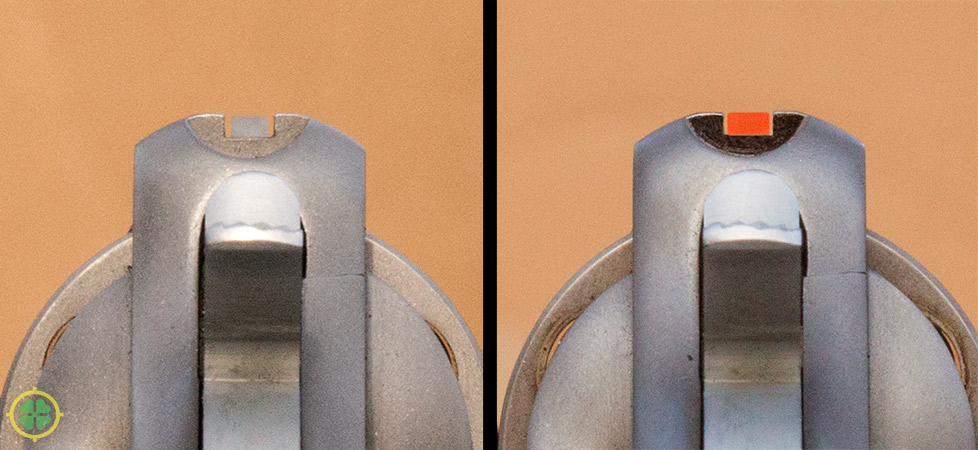
As for the sights, I’ve found the model 64 much easier to work with than I thought I would. With some black Sharpie on the rear sight and a little fluorescent orange paint marker applied on the front, visibility is vastly improved. I’ve made the front sight mod to fixed sight revolvers in the past, but didn’t try blacking out the rear until just now, and I’m impressed at how much of a difference that has made. In ideal daytime lighting conditions shooting at distances from 3-25 yards, there has been a negligible difference in my performance with the two guns. I plan to keep tracking and comparing the two during my practice sessions to find out when and if the fixed sights become a hindrance.
So whoever’s next in the line of revolver candidates has some high standards to meet. I’ll be making that reveal in a couple of weeks but here’s a hint: it’s not a Smith & Wesson.



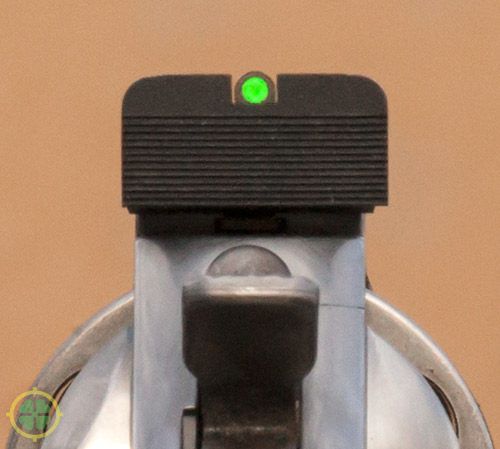
Well, since you were willing to go an ounce over on weight for the model 66, that brings the Ruger Six series with 2.75″ barrels within reach. That would be high on my list, as I find the Ruger cylinder release easier to use left handed. You do gain about 0.055″ in cylinder girth (over a K frame) with the Six series, but they are still slimmer than the 386.
It’s been on the “maybe” list for a while. Depends on what I’m able to find in terms of holsters, grips, speed loaders, etc.
UGG! I really don’t like that dull, brushed stainless. Quite a waste of a potentially beautiful metal. IMHO
Can always polish it back to a mirror. But brushed doesnt show every fingerprint on the planet. it is harder to clean when it is dirty though.
I only have one Smith, a mod 60 .357 with (I think) a 2.125″ bbl. I have two Ruger .357’s, a sec six 4″ and a gp100 3″. Out of the box the Smith has the best double action trigger. Both it and the gp100 seem a little muzzle heavy, but I’m thinking that’s by design (to help with muzzle flip during recoil?). The Sec 6, even with the longer bbl seems to have a more balanced feel. The revolver I have that seems to feel the most balanced is a Taurus .380. I bought it to shoot up a bunch of .380 ammo I had that wouldn’t function properly in my .380 semi auto. I like that little gun a lot. It just feels good in my hand. Talk about getting off topic! Sorry!
The 66 finish looks SO MUCH better than the DULL matte finish on the 64.
Good article, it’s nice to see WHEEL GUNS gets some respect! One point of correction–Unless I am mistaken, the Model 66-6 shown actually has a 3.25 inch Barrel, not a Three-incher–I believe it was from a run on “Stocking Dealer Specials” done right around the time that “The Lock” was introduced. HTH….Mike S.
S&W model 242 is an L frame 7 shot .38spl revolver with a completely concealed hammer in a 2 inch barrel. It’s also an Air Light frame with a Ti cylinder so it’s super easy to carry and the mid size Smith frame makes it comfortable to shoot. The 242 is hard to find and was only made for a short period (less than a year I believe). It is my daily carry and I highly recommend it. With the 242 you either think it’s butt ugly and hate it or love it.
My Model 64-4″ bbl. was standard issue by my department back in the day. They gave me the option to keep this wheel gun or my Glock 17. The Glock can be found anywhere and are a dime a dozen. My 64 shoots accurately since day one and carries pretty well considering its size. I’ll never part with it. I’m looking for a Model 64-3″ version for my 82 yr. old father, a former Marine who still carries his .38-2″ steel wheel gun.
What height Bowen rough country sight did you use with the factory hi-viz sight?
Don’t remember, except that it wasn’t the correct height.
Do you recall if it was causing you to shoot high or low?
Looking at the options on the Bowen website, I believe I originally had the .370 or .385 rear sight blade. In my photos of that setup, I’ve got the rear adjustment screw backed all the way out to get the sight as high as it would go, so it must have been hitting low. I’ve got the .400 blade in there now and still have the screw backed out most of the way, but I’m not using the Hi Viz front anymore, so YMMV.
Dang sweet article!